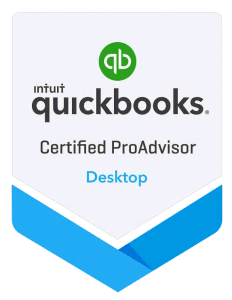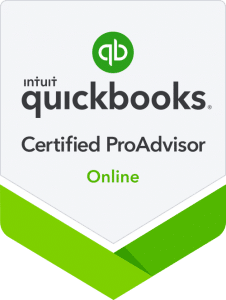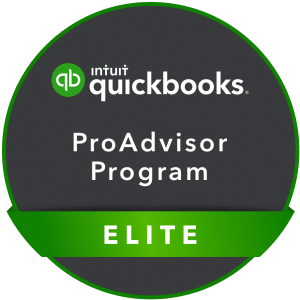Financial reports might sound like something only accountants care about, but for business owners, they’re a big deal. These reports give you a clearer picture of what’s going on behind the scenes. Instead of guessing how your business is doing, you get solid information that helps you stay on track. Whether you’re reviewing your monthly expenses or planning next quarter’s goals, these reports can guide you through the decision-making process without confusion.
The good news is you don’t need to be an accounting expert to use them. You just need to know which ones to pay attention to and what they can tell you. A few easy-to-understand financial reports can make managing your business a whole lot smoother. Once you’re familiar with them, it becomes easier to spot problems early, plan for growth, and stay confident about your numbers.
Profit And Loss Statement
The profit and loss statement, or P&L, is like a monthly report card for your business. It shows how much money comes in and how much goes out. At a glance, you can see whether you’re actually making money or just breaking even. It breaks your income and expenses into categories, so you can see which parts of your business are earning the most and where your money is going.
You might notice, for example, that your operating costs are creeping up over time. Or maybe sales have dipped compared to the previous month. These kinds of trends can be easy to miss if you’re not checking your P&L on a regular basis. But once you make it a habit, you’ll get better at reading those signals before they turn into surprises.
There’s no need for advanced math. This report does the calculations for you and gives you a bottom-line view, which is your net income (or loss). Looking at this regularly helps you:
– Stay on top of your revenue and expenses
– Spot unusual spikes in spending
– Understand which months are more profitable
– Plan upcoming budgets with better accuracy
Even if you’re busy running your business day to day, carving out time each month to check your P&L can help you keep things running smoother and more financially sound.
Balance Sheet
Where the P&L shows how much you’re making, the balance sheet shows what you actually have and owe. Think of it like a snapshot of your business’s worth at any given moment. It lists out your assets (what you own), liabilities (what you owe), and equity (what’s left after subtracting liabilities from assets).
Assets could be cash, inventory, accounts receivable, or equipment. Liabilities include things like outstanding bills, credit card balances, or loans. The difference between those two shows the equity you’ve built into your business over time.
By reviewing your balance sheet, you can see if your resources are growing or if you’re leaning too much on borrowed money. It also helps you measure whether your business can handle upcoming bills or unexpected expenses. Small business owners often overlook this one, but it’s one of the clearest ways to track business health. It’s also something banks and partners might ask for if you’re planning to get financing or grow your operation.
When used alongside the P&L, the balance sheet shows the full financial picture. One tells the story of income and spending, the other covers assets and debts. Together, they can help you run smarter, reduce financial stress, and build a more stable business over time.
Cash Flow Statement
Understanding cash flow is like keeping track of the weather for your business. A cash flow statement reveals money coming in and going out over a specific period. Each section highlights a part of your business activities. Operating activities show cash from daily operations, such as money from sales and payments for goods. Investing activities detail cash spent or received from buying or selling assets like equipment. Financing activities reflect changes in funds from loans or investors.
Tracking cash flow ensures that you always know whether you’ve got enough to cover bills, wages, or unexpected expenses. It can highlight times when money will be tight, so you can plan ahead and avoid financial hiccups. Think of it as a little check-in that helps you make better decisions, like when you might need to slow down on spending or consider investments that fit your cash position. This insight helps you keep your business running smoothly without nasty surprises.
Accounts Receivable Aging Report
An accounts receivable aging report is a simple tool that tracks who owes you money and how long it’s been owed. Think of it like a friendly nudge to check the debts owed to you. The report lists outstanding invoices, showing customers who haven’t paid along with the number of days each invoice is overdue.
Using this report helps maintain healthy cash flow by reminding you to chase overdue payments. It’s useful for understanding which clients might need a gentle reminder about an outstanding bill. Regularly reviewing these reports means you can spot patterns, such as a client who consistently pays late. Prompt collections ensure more cash is available for your business needs, reducing reliance on loans or delaying purchases just because you’re waiting on payments.
Budget vs. Actual Report
The budget vs. actual report serves as a reality check. It shows a comparison between your budgeted figures and what actually happened during a set period. This allows you to see if you’re on track with your financial goals and adjust if needed.
By reviewing this report, you can identify variances in your expected and actual spending or income. For instance, if marketing costs exceeded your budget, you can dig deeper to understand why and decide whether to trim other areas or adjust your budget moving forward. Maybe you spent more because of a new campaign, and if it’s bringing in more revenue than expected, then the extra cost might be worth it. This report doesn’t just show where you went off track, it also provides learning opportunities for future planning.
Staying On Track With Finances
Keeping your business financially healthy involves more than just watching pennies. Regularly reviewing key reports like the P&L, balance sheet, and others discussed means you’ll be better informed when deciding about your business’s next steps.
These reports are like tools in a toolbox, each serving a different purpose but all helping to paint a full picture of your financial situation. By understanding and using these reports, you’re not just keeping your business afloat. You’re staying ahead of problems, spotting opportunities, and making smarter decisions with confidence. Whether you’re planning ahead or dealing with a bump in the road, these reports help you make sense of your numbers and stay in control.
Steering your business with confidence means having the right insights at your fingertips. By incorporating regular financial reporting into your routine, you can make more informed decisions and ensure your business’s financial health. Cloud Bookkeeping is here to assist you in this journey. Explore our financial reporting services to gain the clarity and control your business deserves.






